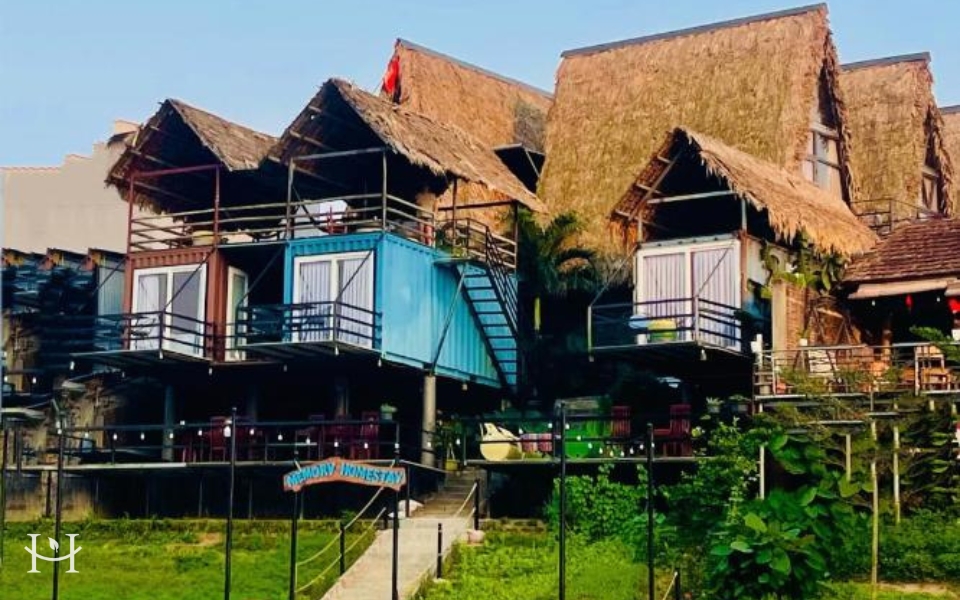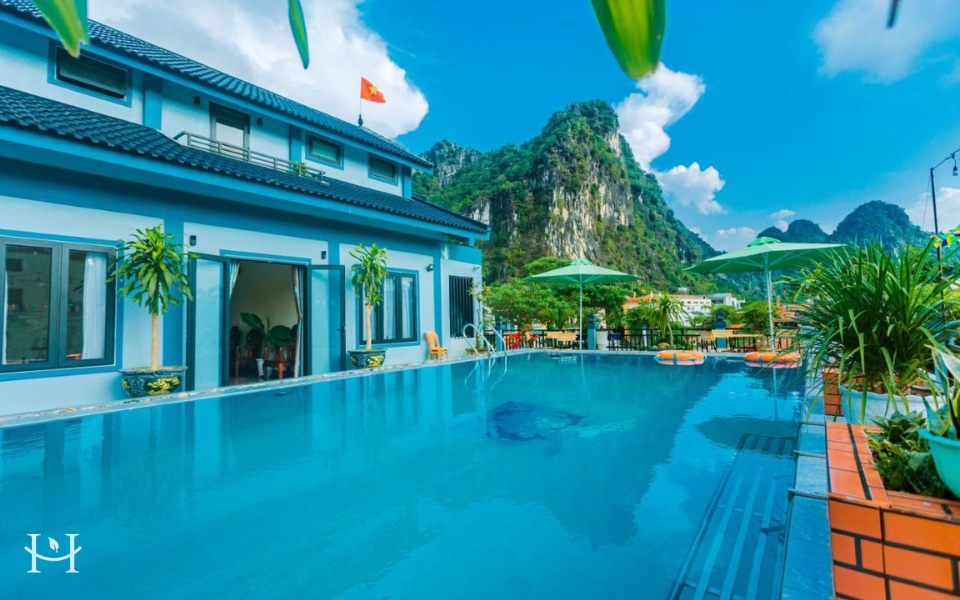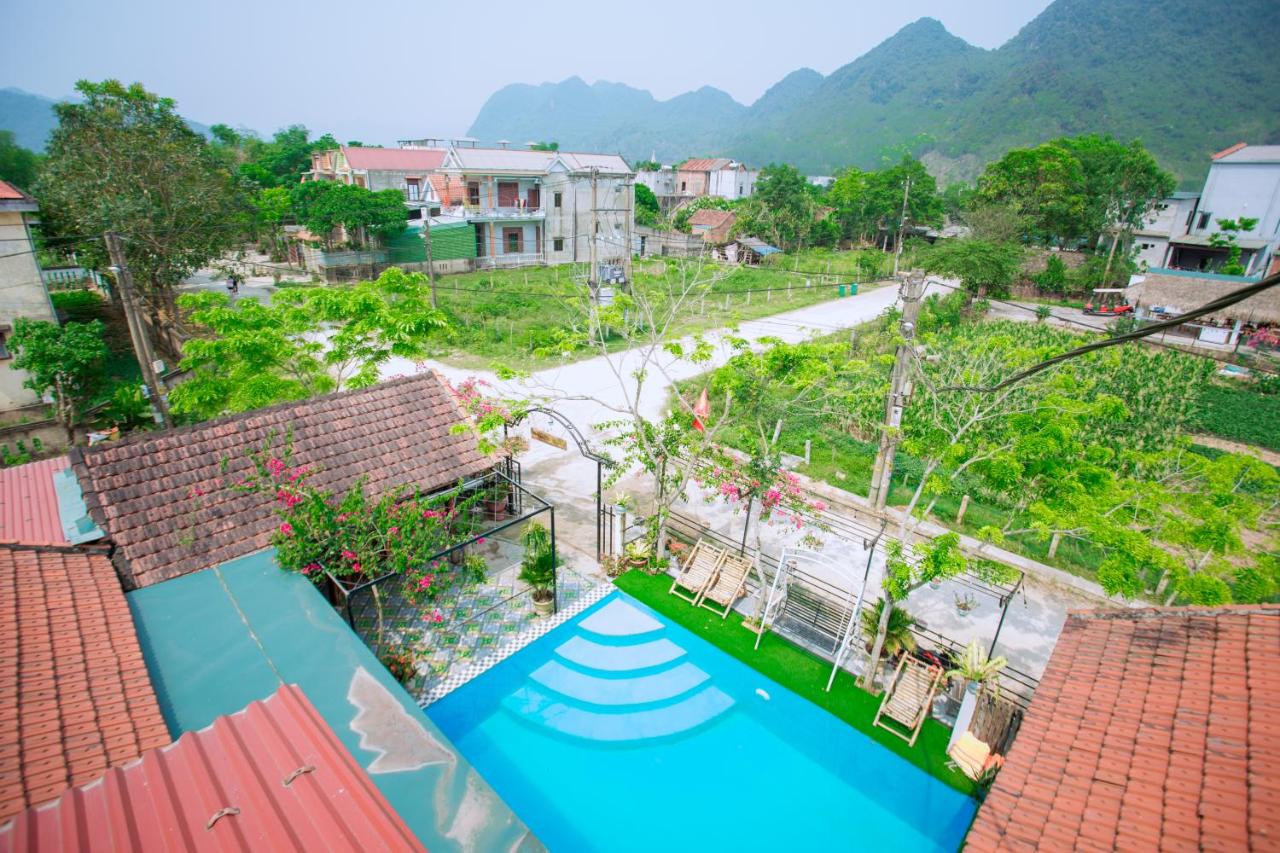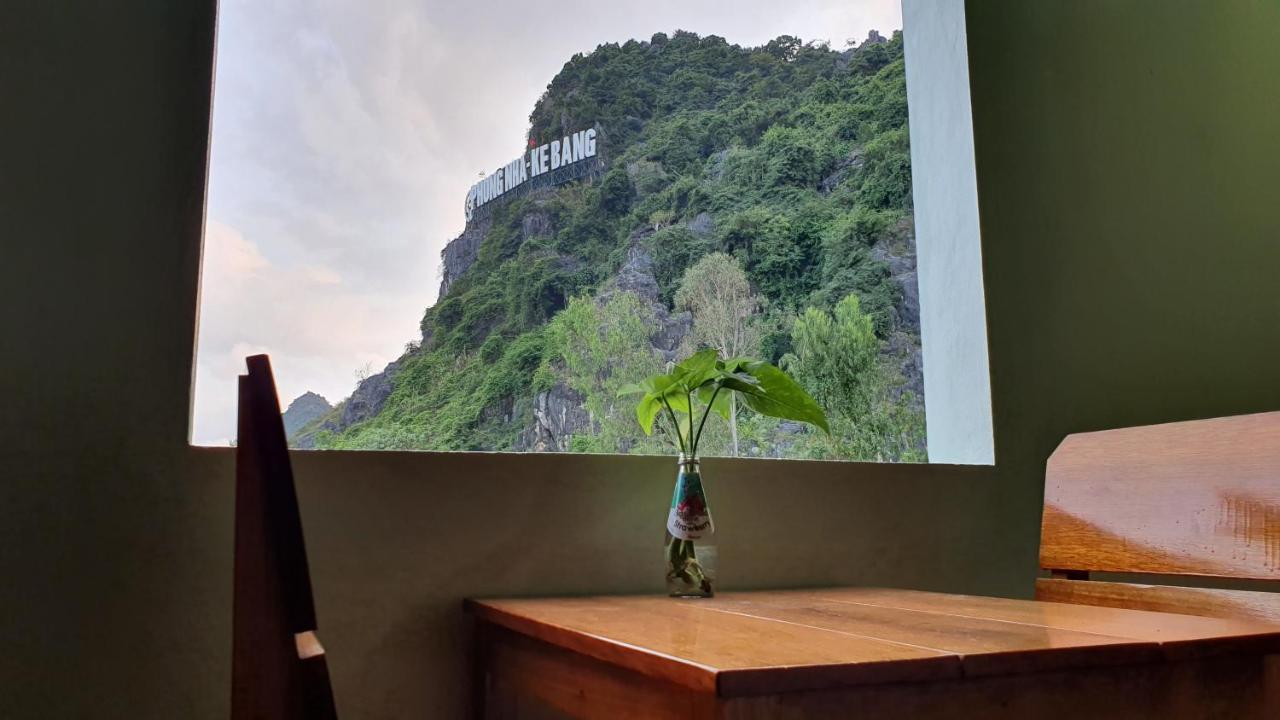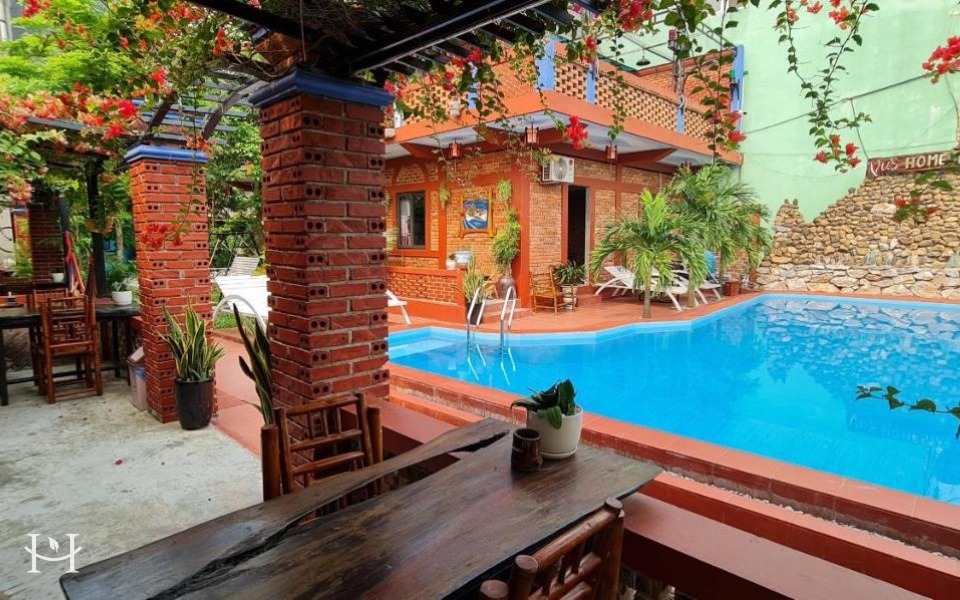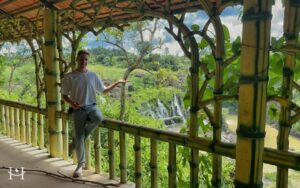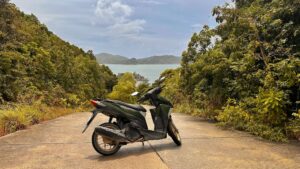Phong Nha, a town nestled among mountains and lush vegetation, captivates not only with its natural diversity but also with unique rock formations. This region is best known for its impressive caves, with dozens located in the area, including the famous Son Doong (the largest cave in the world).
Table of Contents:
- Basic information about Phong Nha.
- Interesting facts about Phong Nha.
- Weather and seasons in Phong Nha – when is the best time to visit?
- How to get to Phong Nha and how many days to plan for your stay?
- Where to find accommodation? List of Recommended Hotels.
- What to do and what’s worth seeing in Phong Nha?
6.1. Botanical Garden
6.2. Hang Tiên Sơn / Phong Nha Cave + boat
6.3. Duck stop
6.4. Paradise Cave
6.5. Dark Cave + zipline, kayak
1. Basic Information About Phong Nha.
Phong Nha is a mountainous region located in central Vietnam, approximately 500 km south of Hanoi. The town is situated within Phong Nha-Ke Bang National Park, a UNESCO World Heritage Site. The landscape, dominated by tropical forests and spectacular karst formations, gives the area a unique character.
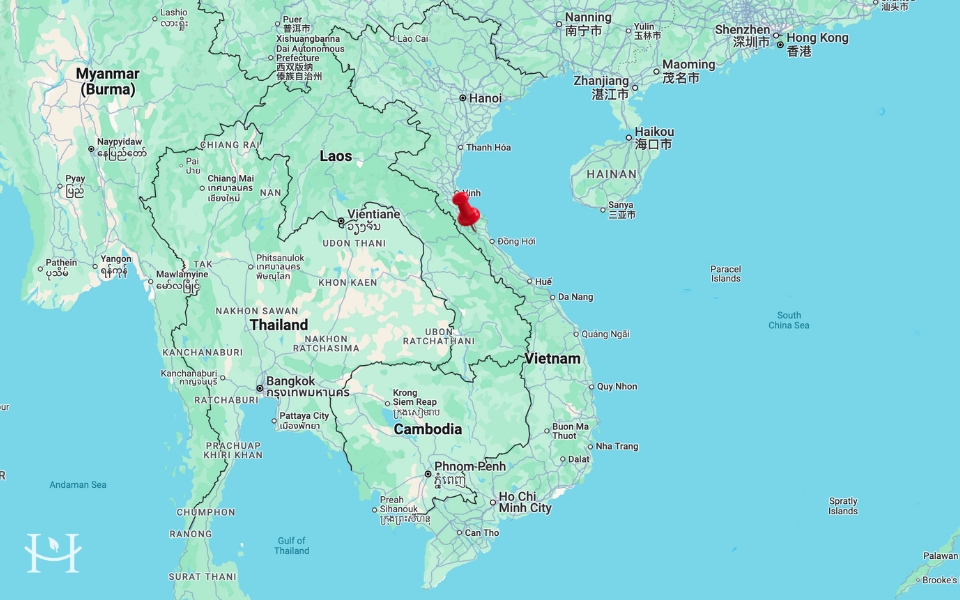
How big is Phong Nha, and what is its population? Compared to larger cities in Vietnam, it is a small town with only a few thousand residents.
To help plan your stay in Vietnam, I’ve included a table below with distances from Phong Nha to places like Da Nang, Hue, Hoi An, and Ninh Binh.
| City | Distance from Phong Nha (km) |
| Hue | 210 km |
| Da Nang | 260 km |
| Hoi An | 300 km |
| Hanoi | 500 km |
| Ha Long Bay | 600 km |
| Sapa | 800 km |
| Ho Chi Minh City | 1,200 km |
By booking here ⬇️ you support my blog – thanks! 😊
2. Interesting Facts About Phong Nha
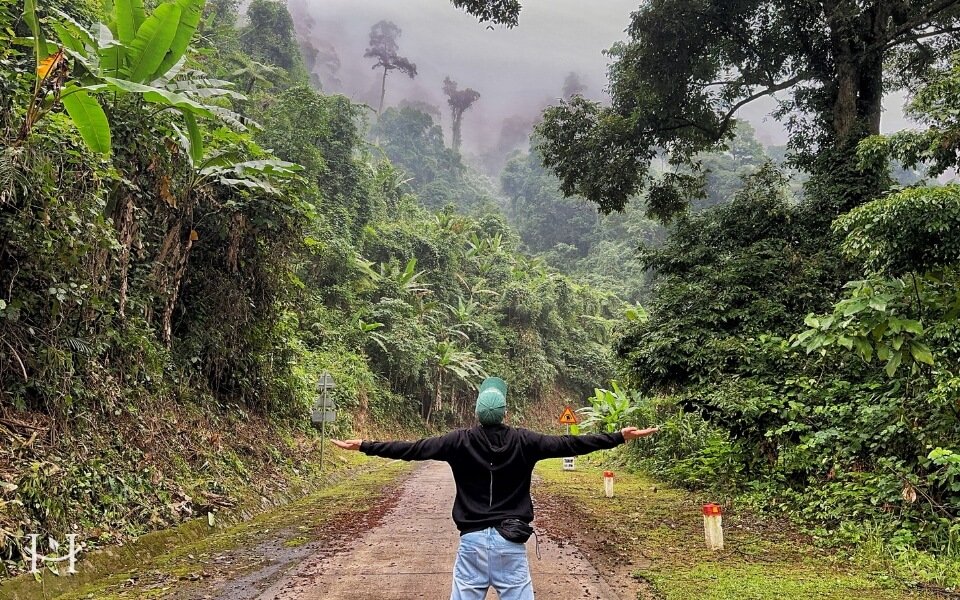
The name of the town comes from the words “Phong” (wind) and “Nha” (teeth or fangs). It refers to the distinctive fang-like rock formations visible at the entrances to the famous caves.
The oldest karst mountains in Asia – Phong Nha-Kẻ Bàng National Park is home to the oldest karst mountains in Asia, formed approximately 400 million years ago.
Sơn Đoòng, the largest cave in the world – Discovered in 2009 by a local resident. Due to its sensitive ecosystem, the number of tourists is strictly limited. Since 2013, expeditions are available only in organized groups from February to August, with a cap of around 500–600 people per year. The cost of the trip is as high as $3,000.
Historical significance – In the caves of Phong Nha, inscriptions and artifacts from the 9th century were discovered, indicating the presence of the Cham civilization.
Adventure tourism – Phong Nha offers numerous activities for adventure enthusiasts, such as trekking, kayaking, and cave exploration, attracting visitors from around the world. Many caves in Phong Nha feature underground rivers that can be explored by boat.
3. When is the Best Time to Visit Phong Nha?
Dry season in Phong Nha:
The best time to visit Phong Nha is during March, April, and May. During this period, the weather is most favorable, and rainfall is almost nonexistent.
In the following three months – June, July, and August – temperatures rise but remain comfortable, especially for those interested in activities like trekking or kayaking.
In December, January, and February, occasional rain showers occur, but the “spring-like” temperatures during this time are still ideal for sightseeing.
Rainy season in Phong Nha:
The peak of the rainy season falls in September, October, and November – it rains almost daily, and temperatures can drop to as low as 14°C. For this reason, I recommend avoiding a visit to Phong Nha during this period.
Weather in Phong Nha by month:
|
Month
|
WEATHER | |
| Precipitation: | Temp. | |
| January | ☀️☂️☂️ |
14–24°C
|
| February | ☀️☂️ | |
| March | ☀️☀️ |
20–30°C
|
| April | ☀️☀️ | |
| May | ☀️☀️ | |
| June | ☀️☀️☀️ |
30–37°C
|
| July | ☀️☀️☀️ | |
| August | ☀️☀️☀️ | |
| September | ☂️☂️☂️ |
22–32°C
|
| October | ☂️☂️☂️ | |
| November | ☂️☂️☂️ | |
| grudzień | ☀️☂️ | 14–24°C |
4. How to Get to Phong Nha and How Long to Plan Your Stay
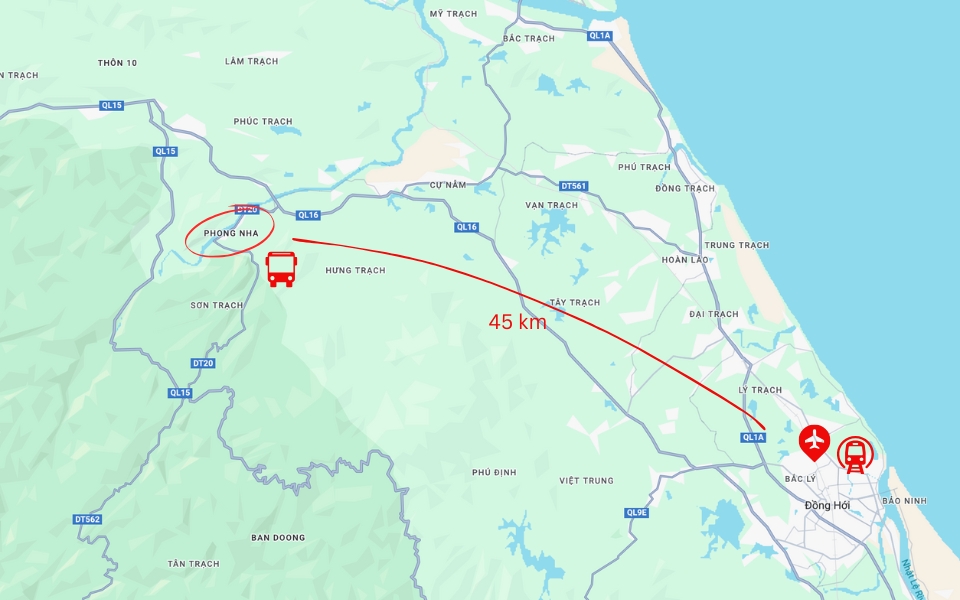
You can reach Phong Nha directly by overnight bus or indirectly by first traveling to Dong Hoi, a city 45 km away, which has both an airport and a train station.
How many days should you plan to stay in Phong Nha? I believe 4–5 days is an optimal period to explore the area and enjoy all the attractions available. Of course, the final decision depends on your expectations and preferences. In this guide, I’ve focused on attractions you can explore independently. However, there are also many options offered by local travel agencies, which might encourage you to extend your stay.
By booking here ⬇️ you support my blog – thanks! 😊
5. Hotels in Phong Nha - Where to Stay?
As I mentioned earlier, Phong Nha is a small town, so most hotels are located close to each other within a 1-kilometer radius. Where to find accommodation? The most interesting hotels are located along the river, offering beautiful views of the landscape and hills.
Hotels in Phong Nha
Below, I’ve compiled the best hotel options in the area. Lista jest sprawdzona pod względem ocen Booking, Agoda i Google.
By booking here ⬇️ you support my blog – thanks! 😊
1. Phong Nha Memory Homestay
Price:: 455 – 665k VDN / night
Average Rating: 9.2/10
A riverside property offering beautiful views and a peaceful setting. It features a spacious terrace and garden.
2. Phong Nha Green Homestay
Price: 455k – 525k VDN/ night
Average Rating: 9.3/10
A cozy place surrounded by greenery, ideal for nature and tranquility lovers. The hosts organize tours and activities such as kayaking trips.
3. Phong Nha Dawn Home
Price: 455k – 525k VDN / night
Average Rating: 9.8/10
A charming property in a traditional style, offering an authentic experience of the region. The property has hammocks and an outdoor relaxation area.
4. Applebee's Homestay
Price: 245k – 350k VDN / night
Average Rating: 9.1/10
A friendly place with a warm atmosphere, known for its beautiful views of the surrounding landscape.
5. Phong Nha Ecolodge Homestay By HOFs
Price: 420k – 490k VDN / night
Average Rating: 9.1/10
Eco-friendly accommodation with views of rice fields and mountains, designed with sustainability in mind. Guests have access to bicycles for self-guided tours.
6. Tam's Homestay
Price: 280k – 455k VDN / night
Average price: 9.6/10
A family-run property where guests can experience local hospitality and homemade food.
7. Vu's Homestay
Price: 140k – 210k VDN / night
Average price: 9.7/10
A property featuring a large swimming pool and a spacious garden. The owners assist with organizing tours and transfers to nearby attractions.
6. Phong Nha - List of Attractions and Places to Visit
As mentioned earlier, the places to visit in this area mainly revolve around vast cave complexes, most of which were discovered relatively recently.
If you’re wondering what to do here, you’ll find a variety of attractions, such as cave exploration, trekking, or kayaking. You can choose between self-guided exploration and one-day organized by local travel agencies – this way, you can easily tailor activities to your budget and interests.
Cave exploration is a must-see activity. Even with self-guided tours, you’ll often join another group with a guide, which usually turns out to be cheaper than a full travel agency offer.
However, keep in mind that professionally organized expeditions can cost up to $75 per person.
6.1. Botanical Garden in Phong Nha
Hours: 07:30 AM – 4:00 PM
Rating: 7/10
Location: here
Guide required: no
Cost: 60k VND (2.5 USD)
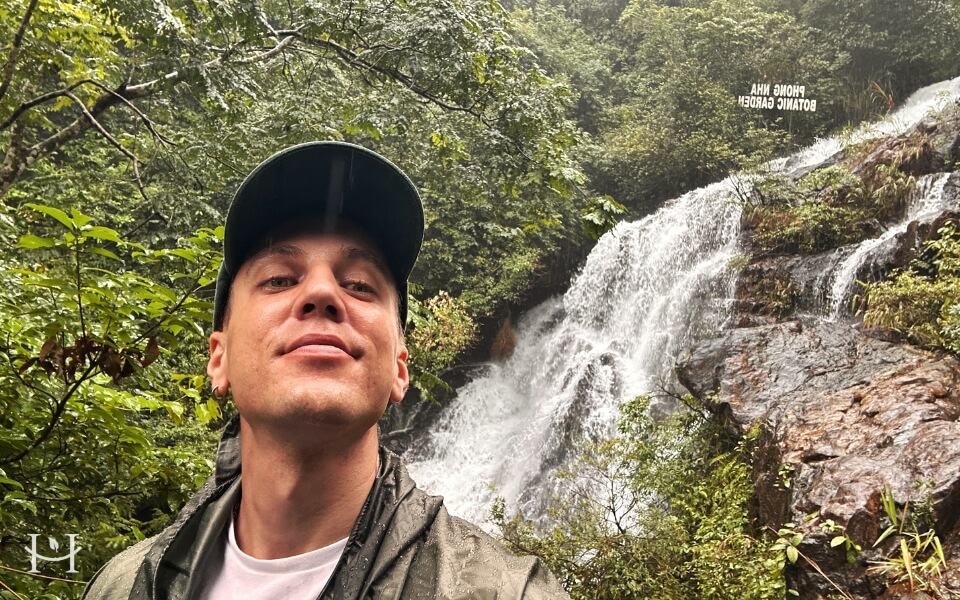
Visiting Phong Nha is worth starting with the Botanical Garden. Although the vegetation initially seems quite monotonous, and halfway through the trail (about an hour of walking), I was convinced I would leave disappointed, the latter part of the trail changed my perception. After several stops at plaques describing century-old trees and a few challenging river crossings (without bridges), I finally reached the main attraction – the waterfall! The trail, reinforced with safety ropes, occasionally runs through the waterfall itself, which I found to be a lot of fun.
It’s worth remembering to bring extra footwear, as wet stones are slippery, and walking barefoot can be dangerous. I personally returned with completely soaked shoes, so an extra pair will definitely come in handy.
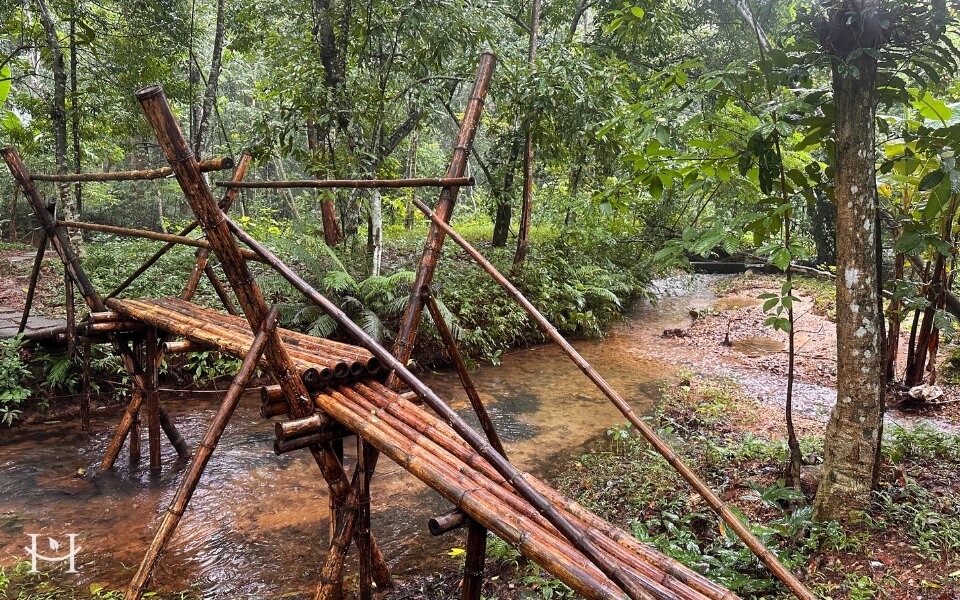
6.2. Hang Tien Son Cave (Phong Nha Cave) and Boat Trip
Hours: 8:00 AM – 3:30 PM
Rating: 7/10
Location: here
Guide required: no
Cost: 220k VND (9 USD)

Time to start exploring the first cave! You can reach it in two ways: by land – which is quite bumpy and uncomfortable – or by water, with a 20-minute boat ride. I highly recommend the latter option, as you can enjoy beautiful riverside landscapes during the journey.
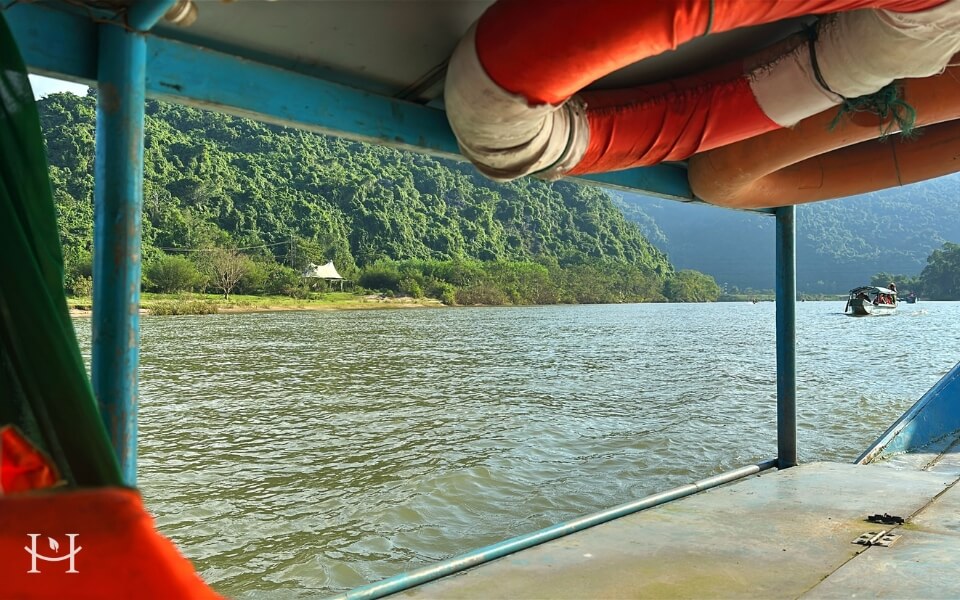
The dock where boats depart is located here (HERE). Ticket prices depend on the number of passengers, as the boat can accommodate up to 12 people. It’s worth waiting at the ticket booth and asking other tourists – especially organized groups – if they have available spots. If you can’t join a group, you’ll need to cover the full cost of the trip on your own. I was lucky: I joined a French tour group and paid about 100k VND ($4) for the boat trip and 120k VND ($5) for the cave entry ticket.
Note! Don’t pay for parking at nearby restaurants; the dock has its own free parking area.
Depending on the river’s water level, the boat can reach varying depths inside the cave. In my case, after recent heavy rains, we were able to enter only about 30 meters into Hang Tien Son.
Once the boat docks on the shore, you’ll have time to explore the cave on your own. Compared to other spots I’ll describe below, Hang Tien Son is relatively small, so 20 minutes is enough for a relaxed visit.
It’s worth noting that the purchased boat trip includes both the journey to the cave and the return trip.
6.3. Duck Stop - A Local Attraction with Duck Feeding
Hours: 8:00 AM – 5:00 PM
Rating: 7/10
Location: here
Cost: 100k VND (4 USD)
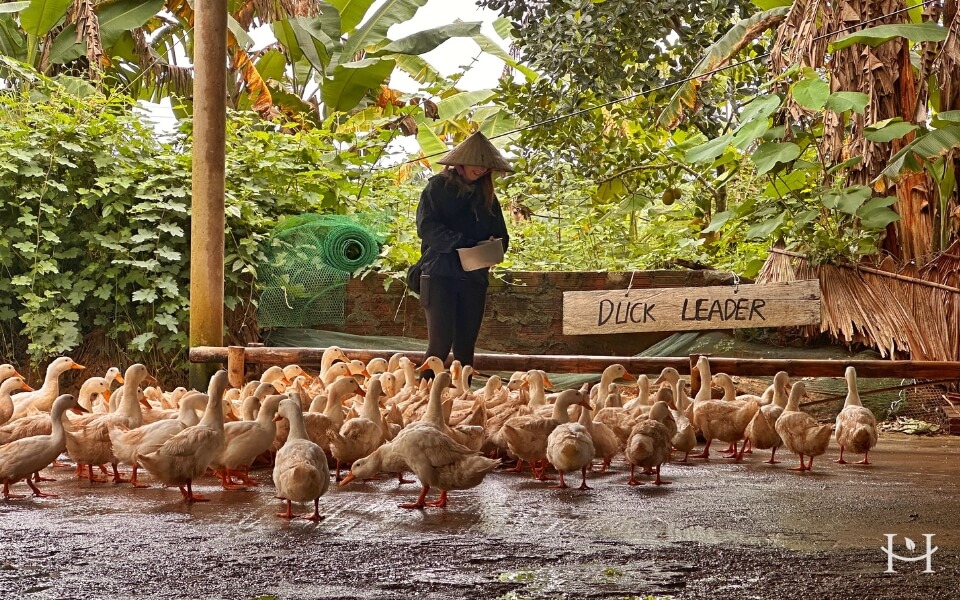
I think it’s not worth visiting cave after cave, so the next day I recommend a popular local attraction – Duck Stop. It’s a duck farm owned by a local family where you can… Feed ducks! I didn’t know what to expect, fearing a tourist trap, but I was pleasantly surprised by both the experience and the organization of the whole activity.
I recommend wearing shorts to minimize the risk of getting dirty (though the place is very clean and well-maintained). As for footwear, there’s no need to worry – special sandals are provided, and you can freshen up under running water after the activity.
The farm is well-kept, and the ducks are divided into small groups, ensuring that everything is ethically handled – both the guests and the duck “hosts” are treated appropriately and happily.
For the price of 100k VND (4 USD), you also get traditional Vietnamese pancakes and a drink.
6.4. Paradise Cave - The Second Largest Cave in Phong Nha
Hours: 7:00 AM – 4:00 PM
Rating: 7/10
Location: here
Guide required: no
Visit duration: approx. 2 hours
Cost: 400k VND (16 USD)
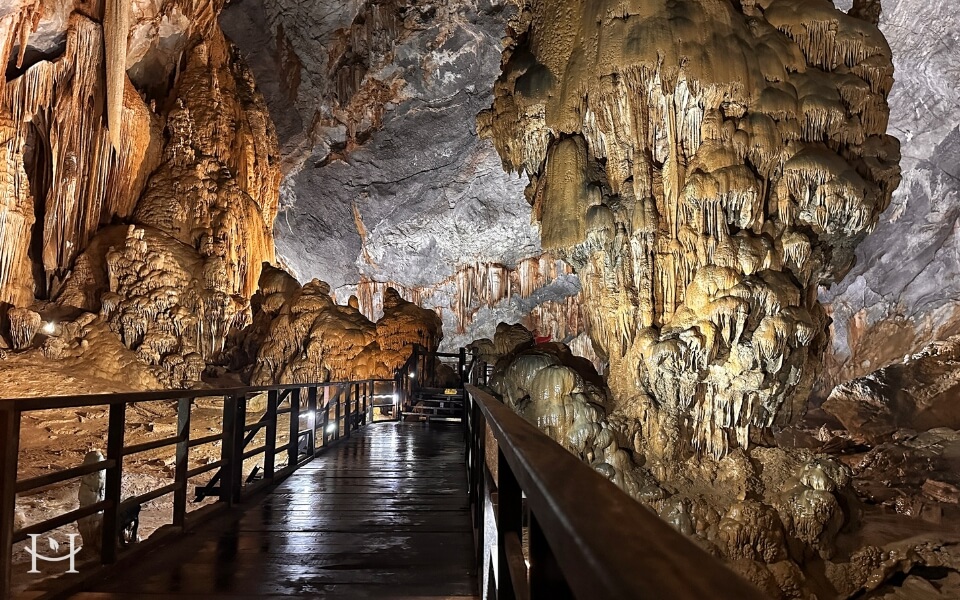
Time for another cave, which you can explore independently, without a guide. This is the second largest formation in Phong Nha. For individual tourists, a 1-kilometer section with wooden walkways is available, while organized groups have access to routes as deep as 7 kilometers.
I chose the individual option, but based on photos available online, I think it’s worth considering a trip with a travel agency, which offers a full adventure – exploring caverns, crossing inner lakes and rivers.
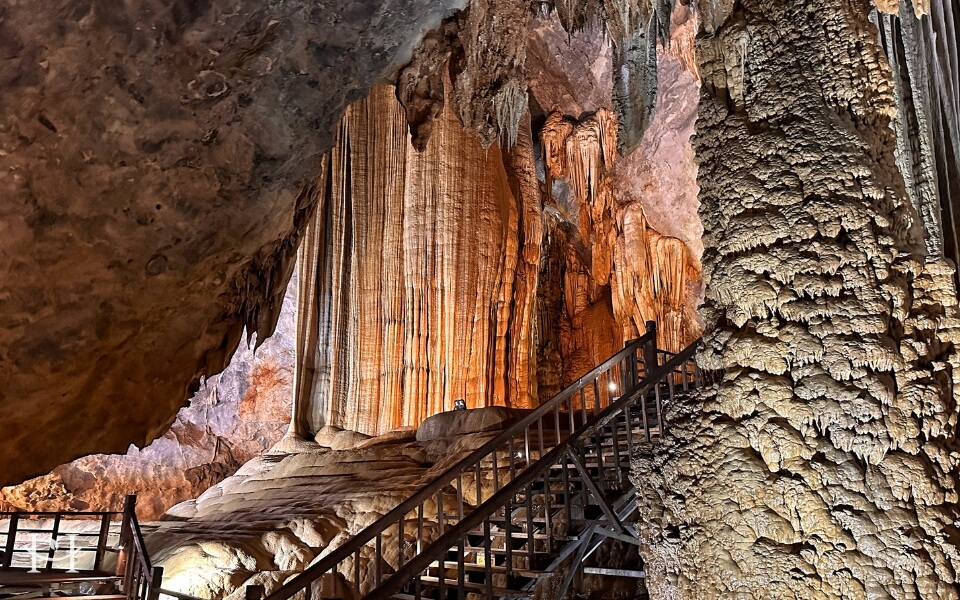
The cave is impressively tall – the ceiling rises to about 70 meters. The interior features extraordinary dripstone formations, including spectacular stalactites and stalagmites.
Walking through the entire accessible section takes about 1.5–2 hours.
This is definitely a must-see during your stay in Phong Nha!
6.5. Dark Cave - Guided Exploration + Mud Bath, Zipline
Hours: 8:00 AM – 3:00 PM
Rating: 7/10
Location: here
Guide required: yes
Cost: 250–450k VND (10 – 18 USD)
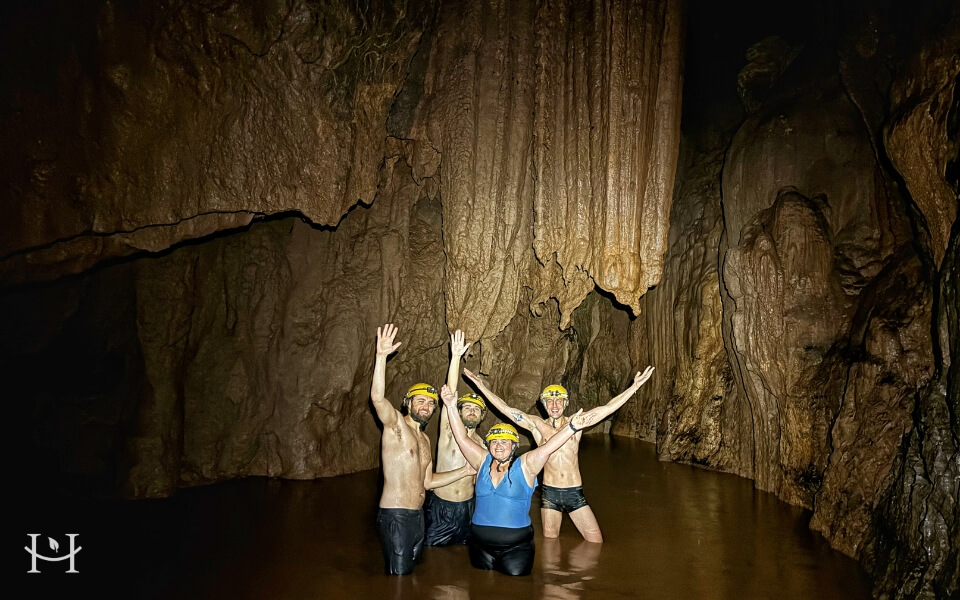
On the way to Paradise Cave, you’ll pass another cave – Dark Cave. However, I believe visiting both on the same day isn’t worth it. It’s better to split the trips into separate days.
Various tour options are available: cave exploration combined with swimming, ziplining, and a mud bath.
Pay attention to weather conditions – during my visit in late November and early December, it often rained, and it was chilly. Dark Cave is relatively small and lacks artificial lighting, so you’ll use headlamps mounted on helmets, adding a unique touch.
You can reach the cave entrance either by zipline or kayak. Inside the cave, swimming is required, so bring swimwear and possibly water shoes. Personal belongings can be stored in secure lockers. In addition to a helmet with a headlamp, everyone receives a life jacket, and a guide accompanies the group on a stand-up paddleboard. This ensures safety for those afraid of water or unable to swim, avoiding direct contact with the water.


